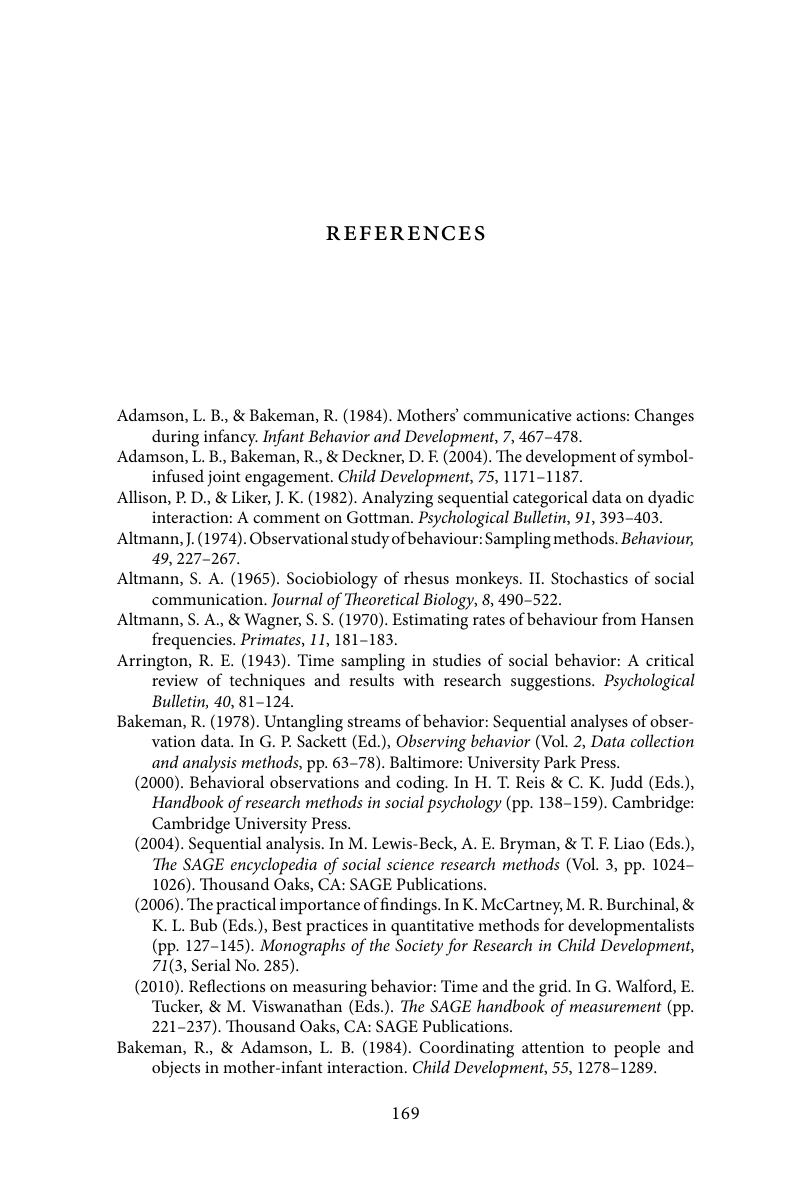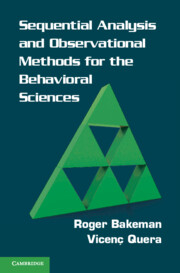Book contents
- Frontmatter
- Contents
- Figures
- Preface
- 1 Introduction to Observational Methods
- 2 Coding Schemes and Observational Measurement
- 3 Recording Observational Data
- 4 Representing Observational Data
- 5 Observer Agreement and Cohen’s Kappa
- 6 Kappas for Point-by-Point Agreement
- 7 The Intraclass Correlation Coefficient (ICC) for Summary Measures
- 8 Summary Statistics for Individual Codes
- 9 Cell and Summary Statistics for Contingency Tables
- 10 Preparing for Sequential and Other Analyses
- 11 Time-Window and Log-Linear Sequential Analysis
- 12 Recurrence Analysis and Permutation Tests
- Epilogue
- Appendix A Expected Values for Kappa Comparing Two Observers
- Appendix B Expected Values for Kappa Comparing with a Gold Standard
- References
- Index
- References
References
Published online by Cambridge University Press: 05 June 2012
- Frontmatter
- Contents
- Figures
- Preface
- 1 Introduction to Observational Methods
- 2 Coding Schemes and Observational Measurement
- 3 Recording Observational Data
- 4 Representing Observational Data
- 5 Observer Agreement and Cohen’s Kappa
- 6 Kappas for Point-by-Point Agreement
- 7 The Intraclass Correlation Coefficient (ICC) for Summary Measures
- 8 Summary Statistics for Individual Codes
- 9 Cell and Summary Statistics for Contingency Tables
- 10 Preparing for Sequential and Other Analyses
- 11 Time-Window and Log-Linear Sequential Analysis
- 12 Recurrence Analysis and Permutation Tests
- Epilogue
- Appendix A Expected Values for Kappa Comparing Two Observers
- Appendix B Expected Values for Kappa Comparing with a Gold Standard
- References
- Index
- References
Summary

- Type
- Chapter
- Information
- Publisher: Cambridge University PressPrint publication year: 2011

